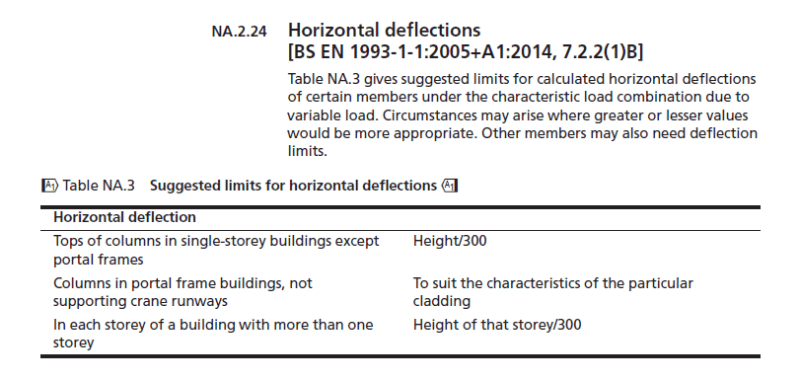LR11
Structural
- Sep 13, 2001
- 166
Hi, it's not clear to me how lateral deflection from wind load is checked when designing to British standard.
I can't seem to find guidance on what CRITERIA applies for WHICH LOAD COMBINATION, and if wind is considered a leading variable, and does the Characteristic combination apply, and when to use combination factors of ψ0=0.5 and ψ1=0.2.
What's the best source of information for this?
Let's say you have a building subject to lateral wind, what’s the criteria for deflection, and for which load combination (is it a leading variable, or which value of ψ to use, and does the Characteristic combination apply).
I can't seem to find guidance on what CRITERIA applies for WHICH LOAD COMBINATION, and if wind is considered a leading variable, and does the Characteristic combination apply, and when to use combination factors of ψ0=0.5 and ψ1=0.2.
What's the best source of information for this?
Let's say you have a building subject to lateral wind, what’s the criteria for deflection, and for which load combination (is it a leading variable, or which value of ψ to use, and does the Characteristic combination apply).


![[thumbsup2] [thumbsup2] [thumbsup2]](/data/assets/smilies/thumbsup2.gif)